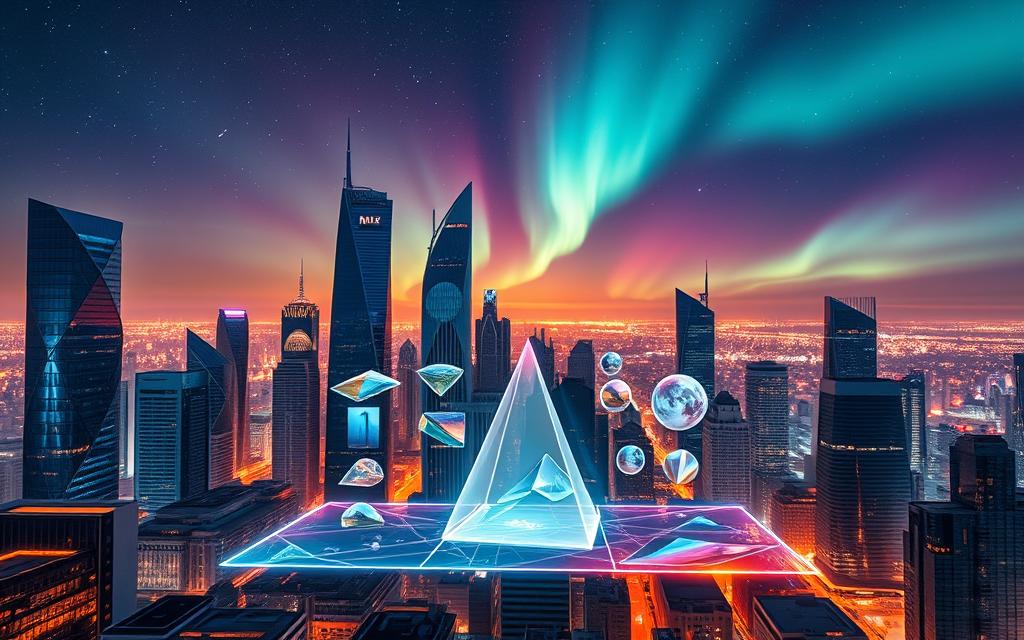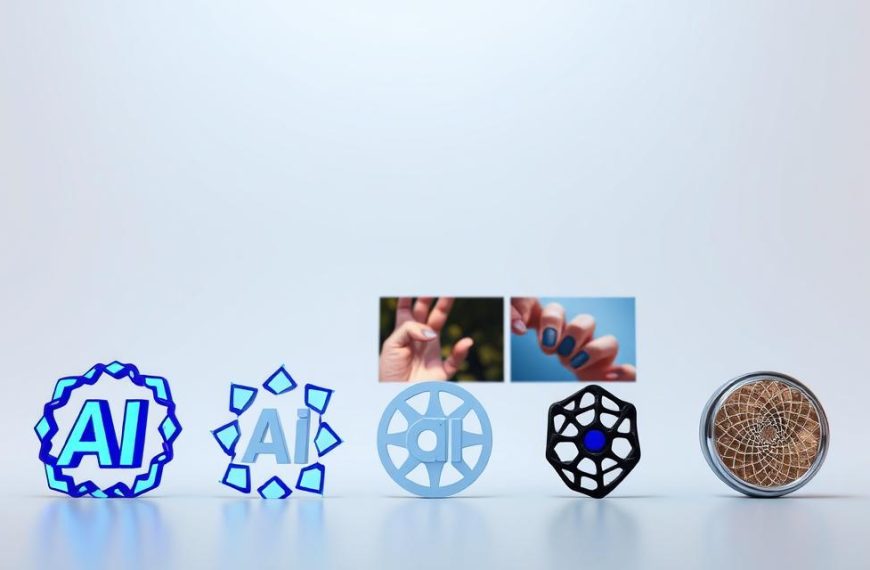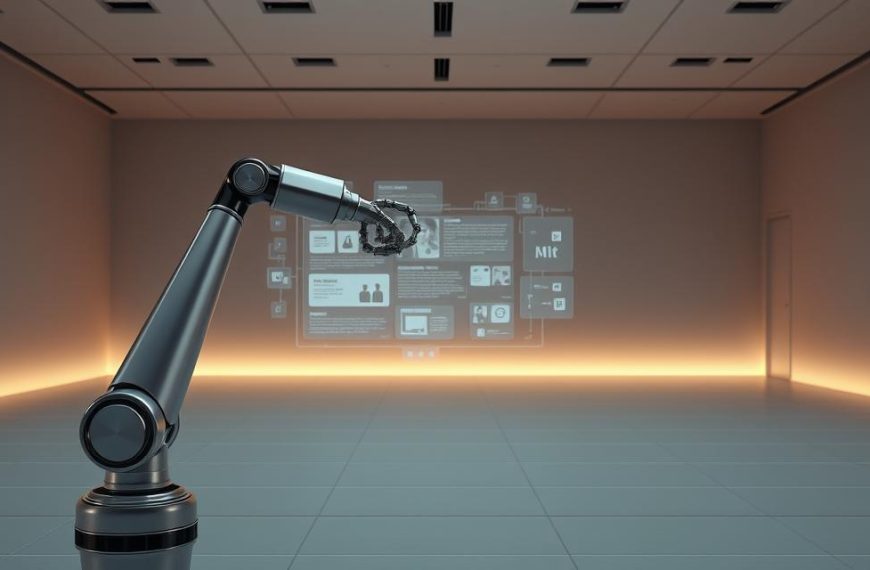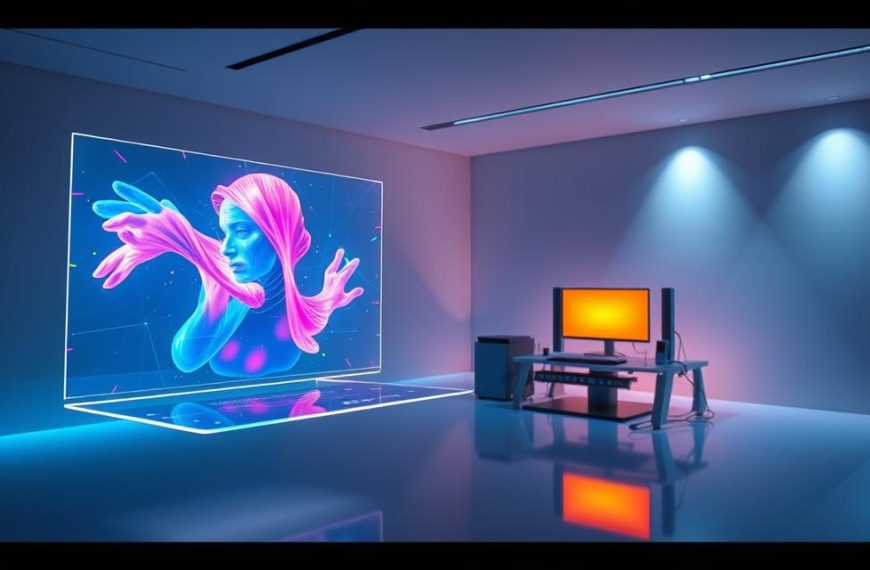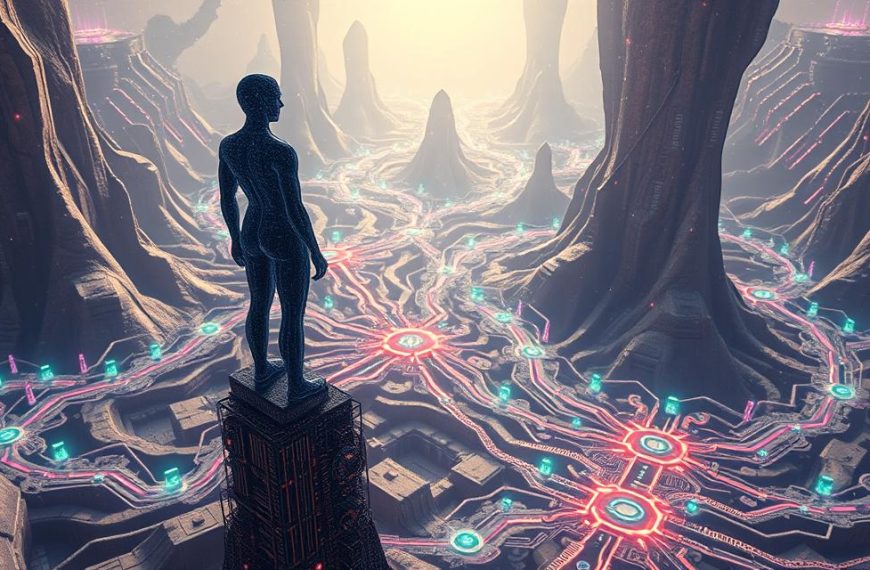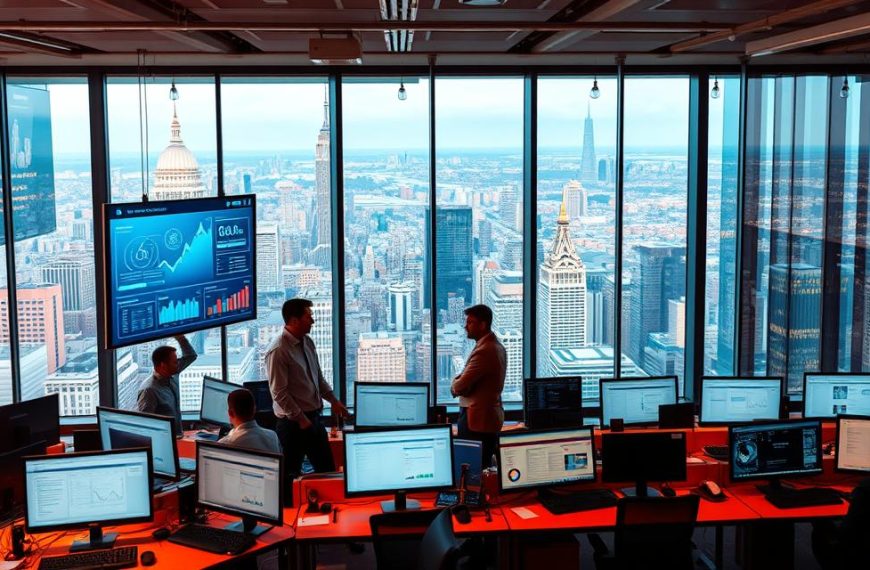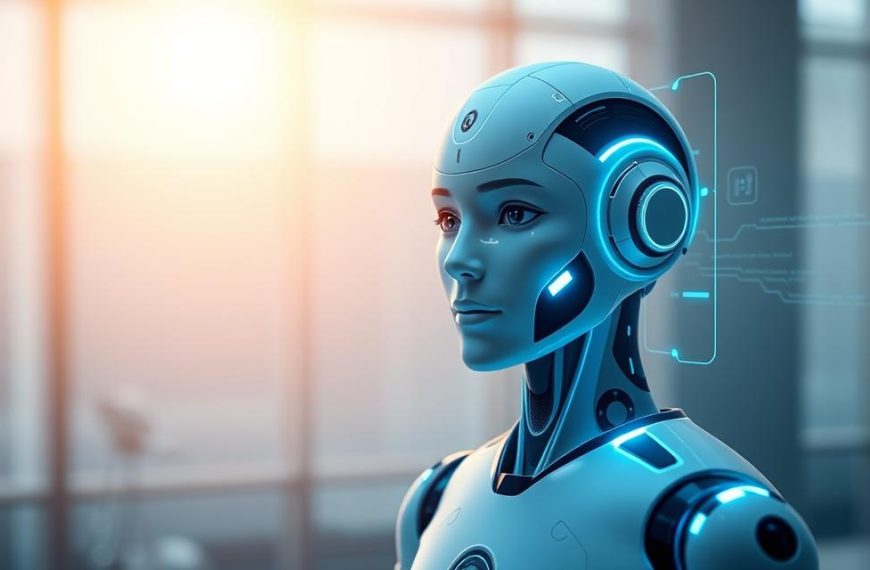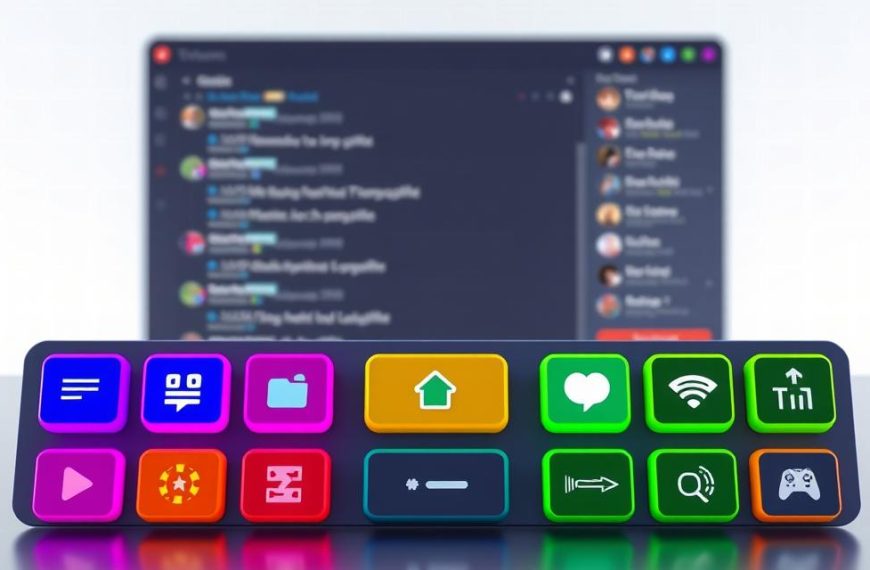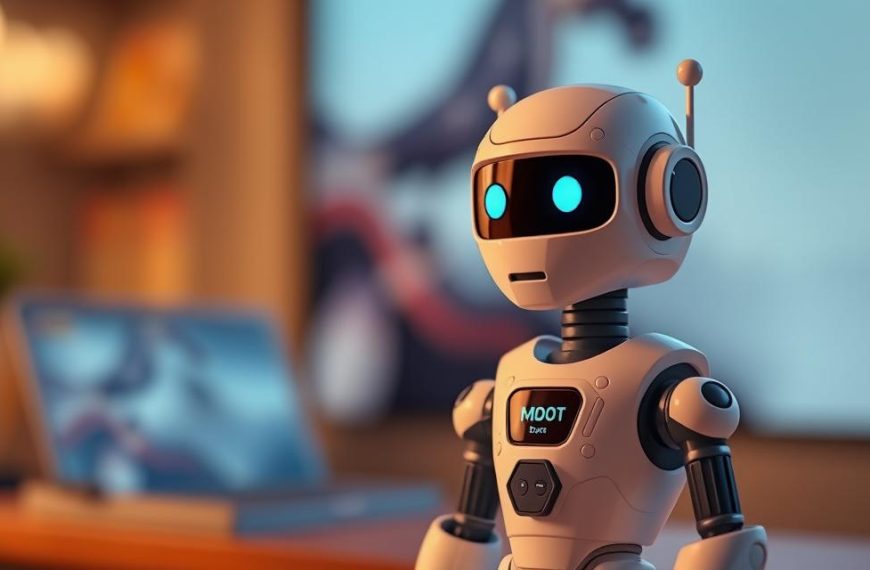The digital world has changed a lot thanks to OpenAI visual tools. They have changed how we do creative tasks.
DALL-E is a top AI image generator that makes pictures from words. It’s a big step forward in AI.
DALL-E shows how words and pictures can mix well. It makes text-to-image AI easy for all, from experts to hobbyists.
This makes it easier for creators in many fields. They can now make their ideas real with more ease and accuracy.
Understanding DALL-E: An Overview of Open AI Image Generation
DALL-E is a big step forward in AI. It shows how machines can turn words into pictures. This system from OpenAI is amazing at making images from text.
It uses years of research in language and vision. This lets it create new pictures from complex prompts.
The Foundation of DALL-E’s Technology
DALL-E uses advanced AI to mix different types of information. Its design is a big leap in AI’s ability to understand and connect various data.
Transformer Architecture and Neural Network Design
The transformer architecture is key to DALL-E’s power. It handles text well and keeps context during picture making.
DALL-E’s neural network design has text and image parts. These work together to turn words into pictures smoothly.
It uses special attention to focus on parts of the text. This makes it fast and accurate at making pictures.
Training Processes and Data Utilisation
DALL-E was trained on huge datasets of text and pictures. This training lets it understand how words relate to pictures.
It learned through both supervised and self-supervised methods. This way, it can grasp visual concepts without needing labels for every scenario.
The training used strategies to learn efficiently and keep things diverse. It learned to spot patterns in different pictures, from real photos to art.
How DALL-E Generates Images from Text
Creating images from text is a complex process. It involves steps that mimic human creativity.
Prompt Interpretation and Visual Synthesis
Prompt interpretation starts with breaking down the text. It finds key concepts and relationships. This helps understand what the picture should show.
During visual synthesis, DALL-E puts these elements together. It creates images by arranging objects and textures based on the prompt.
It uses diffusion models to improve random noise into clear images. This method ensures high-quality pictures while keeping them flexible.
Output Quality and Customisation Options
DALL-E can make pictures at different sizes. Higher sizes mean more detail. Users can choose the size based on their needs.
There are many ways to customise the output:
- Style preferences from realistic to artistic
- Detail level for different needs
- Composition variations for different views
The quality of the output depends on the prompt and style. Clear, detailed prompts usually lead to better pictures.
| Customisation Option | Available Settings | Impact on Output |
|---|---|---|
| Resolution | 256×256 to 1024×1024 pixels | Higher resolution offers more detail |
| Style Guidance | Low to High intensity | Affects artistic interpretation |
| Variation Count | 1 to 4 images per prompt | Provides multiple interpretations |
| Detail Enhancement | Basic to Advanced levels | Improves texture and complexity |
The DALL-E system is always getting better. It’s becoming more useful for creative and practical uses.
The Development Journey of OpenAI’s Image Models
The move from text-based AI to creating images is a big step forward. OpenAI’s work shows how language models grew into systems that can make pictures. This is a key AI advancement in recent years.
From GPT-3 to DALL-E: Evolutionary Steps
The shift from GPT-3 to DALL-E wasn’t quick. Researchers used GPT-3’s design to start working on image-making. They saw its power in understanding different types of data.
They then worked on making the model understand both text and images. This involved a lot of training on various data sets. This effort allowed the system to create images based on text prompts, a big step forward in image model development.
| Feature | GPT-3 Capability | DALL-E Enhancement |
|---|---|---|
| Data Processing | Text-only understanding | Multimodal text-image processing |
| Output Type | Text generation | Image generation from text |
| Training Approach | Language model training | Cross-modal training |
| Creative Scope | Limited to textual creativity | Visual and conceptual creativity |
Advancements in DALL-E 2: Key Improvements
DALL-E 2 was a big leap forward from the first version. OpenAI fixed old issues and added new features. These changes improved how users interact with the system and the quality of the images.
Enhanced Resolution and Detail Accuracy
DALL-E 2 can now make images up to 1024×1024 pixels, a big jump from before. This means the images are clearer and more detailed. They also look more realistic, with better lighting and composition.
The system can now handle more complex requests. Users can ask for specific styles or elements and get good results. This is a key step in the DALL-E evolution towards being a useful tool.
Increased Speed and User Accessibility
DALL-E 2 is much faster now, making it easier to use. It can generate images in seconds, not minutes. This makes it easier for everyone to try out and use.
The interface is also simpler. OpenAI made it easy to use, so more people can create images. This change makes AI tools more accessible to designers, educators, and creators everywhere.
Practical Uses of DALL-E Across Sectors
DALL-E is not just a technical wonder. It’s also very useful in many real-world jobs. Companies use it to boost creativity, make work easier, and show complex ideas in pictures.
Creative and Design Industries
The creative world loves DALL-E for making new pictures fast. Designers and artists use it to start ideas and work on them quickly. This makes their work go faster.
Artistic Projects and Conceptual Visuals
Artists use DALL-E to try out new ideas and get inspiration. It helps them turn abstract thoughts into pictures quickly.
Digital artists mix AI pictures with their own work. This mix lets them explore new ideas while keeping their own style.
Marketing teams use DALL-E to make ads and social media posts fast. It lets them test different ideas quickly without long photo shoots or design meetings.
Small businesses can make professional-looking stuff like logos and product pictures without spending a lot. DALL-E makes high-quality visuals easy to get.
Academic and Scientific Applications
Schools and research places find DALL-E useful for teaching and showing data. It turns hard ideas into pictures that everyone can understand.
Educational Visual Aids and Simulations
Teachers make special pictures for books, talks, and online classes. DALL-E helps make science and history fun and clear.
History teachers bring the past to life, and biology teachers show how cells work. This makes learning more fun and helps students remember better.
Research Data Illustration and Analysis
Scientists use DALL-E to show data and ideas in pictures. It helps share research in a way that everyone can get.
Research papers use DALL-E pictures to explain ideas. This makes it easier for more people to understand and care about the research.
| Sector | Application Type | Key Benefits | Example Use Cases |
|---|---|---|---|
| Creative Industries | Concept Development | Rapid prototyping, idea exploration | Mood board creation, style exploration |
| Design Sector | Brand Assets | Cost efficiency, consistency | Logo design, marketing collateral |
| Education | Teaching Materials | Concept visualisation, engagement | Historical reconstructions, scientific diagrams |
| Research | Data Presentation | Abstract concept translation | Statistical visualisations, model representations |
| Publishing | Illustration | Custom imagery, speed | Book covers, article illustrations |
The table shows how different fields use DALL-E in their own ways. Each one uses the AI’s strengths to meet their needs.
Advantages of Employing DALL-E for Image Generation
DALL-E brings big benefits to how we make images. It makes creating visual content easier and cheaper. This means more people can make high-quality images than ever before.
Time and Resource Efficiency
DALL-E makes making images fast. What used to take designers hours can now be done in minutes with just a text prompt.
This tech cuts out many steps in design. You don’t need to sketch or go through many revisions like before.
This saves a lot of time and effort. It lets teams focus on strategy and making things better, not just making images.
Using DALL-E also saves resources. You don’t need special materials, expensive computers, or long training to get great results.
Democratisation of Artistic Tools
DALL-E makes creating images easy for everyone. You don’t need to be a trained designer to make amazing pictures.
It’s not just about skill. You don’t need to spend a lot on software or computers to make professional images.
This opens up new ways for people to share their ideas. Small businesses, teachers, and individuals can use tools that were once only for big companies.
As one expert said:
“DALL-E is the biggest chance for everyone to be creative like desktop publishing changed writing.”
Economic Benefits Over Traditional Methods
Using DALL-E can save a lot of money. It helps businesses of all sizes save money in many ways.
Design services can be very expensive. DALL-E cuts down on costs for things like design contracts, software, and training.
- Professional design contracts and retainers
- Software licensing fees for design applications
- Specialised hardware investments for design work
- Training programmes for design staff
DALL-E also makes it easy to test different designs. Marketing teams can try out different looks without spending more on design.
This is great for businesses with small budgets. Start-ups, charities, and schools can all save money with DALL-E.
For industries that use a lot of content, DALL-E’s benefits add up. It helps them get their messages out faster and more effectively.
Challenges and Ethical Aspects of DALL-E
DALL-E is a big step in technology, but it raises big questions. It’s about technical limitations and ethical considerations. As it becomes more common, we need to understand these issues.
Technical Limitations and Bias Issues
DALL-E is amazing, but it has some big problems. These problems affect how well it works and how reliable it is.
Inconsistencies in Generated Outputs
When you use DALL-E, you might get unexpected results. The AI can struggle with:
- Showing complex scenes correctly
- Keeping characters looking the same
- Putting text in images right
- Making sense of complicated scenes
These problems mean you might need to try again and again. It shows how different human art is from AI.
Risks of Misinformation and Manipulation
DALL-E can make images that look very real. This is a big worry because it could be used badly. It could be used to:
- Make fake videos of famous people
- Make fake evidence or news
- Make misleading ads
- Change historical or news pictures
This makes us worry about whether what we see online is true.
“Making image-making tools easy to use is important. But we also need to stop bad uses. We’re living in a time where seeing things might not mean they’re real.”
Legal and Moral Considerations
DALL-E also faces big legal and moral questions. These questions are getting more complex as laws try to keep up with new tech.
Copyright and Ownership Debates
There’s a big question about who owns AI-made art. The copyright issues include:
- Who owns AI-made images?
- Is using training data a copyright problem?
- What are the rules for using AI in business?
- How do we deal with AI-made versions of other work?
Most places don’t have laws for these new problems. This makes it hard for businesses to know what’s okay.
Responsible Usage Guidelines
OpenAI is trying to make sure DALL-E is used right. They have rules to help keep things ethical. These include:
- Filters to stop bad images
- Rules against spreading false information
- Telling users about what DALL-E can do
- Watching for bad uses
These rules are a good start. But they need to keep getting better.
| Risk Category | Potential Impact | Current Mitigation Strategies | Future Considerations |
|---|---|---|---|
| Bias in Outputs | Reinforcing stereotypes | Diverse training data curation | Advanced bias detection algorithms |
| Misinformation | Eroding trust in visual media | Content filtering systems | Digital provenance standards |
| Copyright Infringement | Legal disputes over ownership | Usage guidelines and policies | Legislative frameworks for AI content |
| Creative Labour Impact | Concerns about job loss | Positioning as a tool, not a replacement | Reskilling initiatives and new role creation |
Creating good rules for AI needs everyone to work together. This includes tech experts, ethicists, lawmakers, and artists. Working together helps make sure new tech is good for everyone.
Future Prospects for Open AI Image Generation
OpenAI’s image tech is set to change many areas. We must think about both tech progress and social effects.
Anticipated Technological Enhancements
New versions of DALL-E will aim for better realism and understanding. They will create images that look real and stay creative.
Integration with Augmented Reality and VR
AI image tech merging with AR and VR is exciting. Imagine seeing designs on real places with AR glasses.
VR could make virtual worlds come alive with AI images. This will change how we enjoy, learn, and train in new ways.
Future tech will let users control images like never before. They can change styles, colours, and more with easy tools.
We’ll see things like:
- Style transfer between images
- Adjusting details with sliders
- Creating groups of images with the same style
Socio-Economic Impact and Industry Shifts
AI image tech will change many industries. Some jobs will change, but new ones will appear too.
Effects on Creative Professions and Job Markets
Artists and designers will work with AI more. They will need to know how to use AI to improve their work.
New jobs might include:
- AI art direction and curation
- Prompt engineering and optimisation
- Ethical AI consulting
Standardisation and Regulation Developments
As AI tech grows, rules will come to protect creators and users. Groups are talking about how to attribute AI-made content.
Rules might cover:
- How to show where content comes from
- Licensing and usage rights
- Ensuring AI is fair and unbiased
These rules will help keep innovation safe and fair for everyone.
Conclusion
DALL-E has changed how we make images. It makes creating visual content easy and high-quality. This is great for many fields.
Our look at DALL-E shows it’s good at following instructions and making real images. A recent review shows GPT-4o is setting new standards for AI in making images.
It’s important to keep improving these tools while being careful. We need to make sure they’re fair and legal.
The future of AI image making looks bright. It will become even more part of our creative work. This will change how we make and use images.

